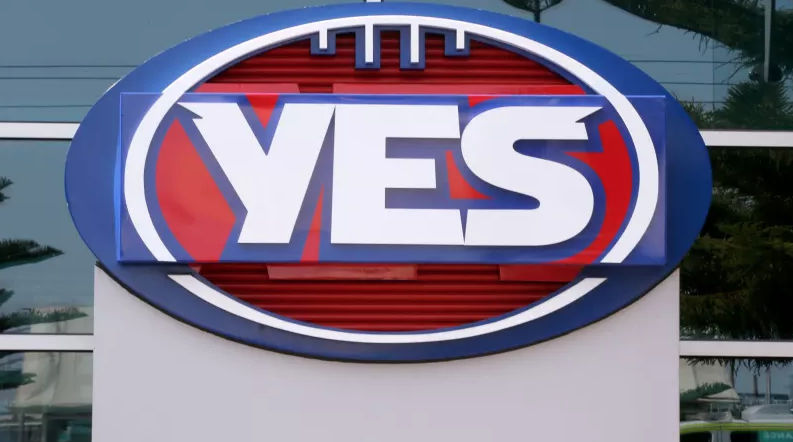Australian brands have gone political, but it’s time to step outside the ‘Zone of Acceptability’
While brands taking a political stance might seem like an authentic way to connect to their customers, when everyone starts to do it, the 'progressive' moniker starts to lose its sheen. The solution? Take things a step outside the 'Zone of Acceptability', writes DPR&Co founder Richard Ralphsmith.
2017 was the year that the politicisation of brands went mainstream in Australia.
Qantas, Meat and Livestock Australia, the AFL, ANZ and many more brands invested heavily in political messages. Their positions invariably complied with an orthodox progressive agenda. This agenda enforces a “Zone of Acceptability” on the brands that wish to play. Within it, brands can take up any hot-button issue – gender equality, marriage, Australia Day and so on – so long as they signal their progressive credentials.
Firmly within the Zone of Acceptability, Qantas led the corporate drive in support of same-sex marriage. ANZ Bank lent its support with long-running GAYNZ campaign, while the AFL changed the logo at its headquarters to a prominent “YES”. These were the most visible of over 800 Australian brands that supported Australian Marriage Equality.

Meanwhile, with its annual lamb campaign, the Meat and Livestock Board flew the progressive flag with Zone-friendly stances on Australia Day, multiculturalism and asylum seekers.
The Zone of Acceptability is enforced by a number of agents. First among them are the social media activists with their threat of reputational damage and boycotts for recalcitrant brands. These activists are enabled by news media, who routinely present the views of a few aggrieved tweeters as “community outrage”.
Coopers Brewery discovered this when it stepped outside the Zone last year. The brand signalled that it would take a neutral stance during the marriage debate. A few social media activists drove pub boycotts of Coopers beer and widespread negative media coverage. Within days, the brand reversed its position, publicly embracing Australian Marriage Equality.
The Zone of Acceptability is reinforced by the politics of adland, particularly the (mostly) young writers and art directors who develop the campaign ideas.
Another factor has been the emergence of the activist CEO. 2017 was the year that saw CEOs take progressive stances on matters beyond their previously accepted remit (areas such as the economy and tax reform). Qantas chief Alan Joyce was first among these during the marriage debate.
Whether a CEO’s stance is taken through sincere belief or an understanding of the Zone of Acceptability, the effect is the same. It signals to executives the norms of speech that will further their advancement. The resulting corporate culture is finding its way into brand advertising.
The activist-CEO phenomenon is vastly more advanced in the US, as described by Aaron Chatterji, associate professor of business and public policy at Duke University: “As more companies take stands, those remaining will be named and shamed on social media, creating impossible choices in an environment where neutrality is not an option.”
This points to the likelihood that politically progressive, Zone of Acceptability advertising will only increase in Australia – more as a defensive play against the business-destroying power of activists than a belief in the brand-building power of the advertising itself.
Indeed, there are signs that advertising in the Zone is having mixed results. ANZ Bank claims to have attracted thousands of new customers with its original GAYTMs campaign, according to its head of marketing, Carolyn Bendall.
The late adopters, however, are all beginning to look alike. This is an irony that mocks the very reason they engaged in political branding – to forge a unique connection with consumers. The Zone militates against uniqueness because the range of acceptable positions is so restricted. That’s why every brand seems to believe in the same things.
This leads to a second problem: a perceived lack of authenticity. Australians suspect that these corporates are parroting “beliefs” that are convenient, rather than sincere and relevant. In short, people are now judging brands the way they judge politicians.
So where is this headed? Following the American path, we can expect social media pressure groups to impose more restrictions on the Zone, with greater threats against non-compliance. This will present marketers with three choices, none of which are without risk.
The first is to remain in, or join, the Zone, delivering communications that will avoid offending the social media activists. The risk here is of “joining the herd” and delivering ad campaigns that feel contrived.
The second option is to avoid the arena altogether, while being prepared to defend your stance as a marketer that is purely focussed on customer outcome.
Option three lies in the fact is that social media opinion is a notoriously poor indicator of public opinion. In 2017, according to the Edelman Trust Barometer, Australians’ trust in social media fell 8% to just 35%.
An opportunity exists, then, for a brand bold enough to flout the Zone of Acceptability in its advertising. After all, if the public doesn’t trust a dissenting brand’s most vocal detractors, the most effective course may be to let those detractors loose. State a non-conformist belief and cop the flak. The keyboard warriors will serve as unwitting salespeople.
The brand will need to ensure that its message is positive and defensible, while balancing the discourse with its own robust PR. The resulting “talkability” may drive levels of free media at many multiples of what it actually pays for.
It will be a brave brand that does this but the reward could be inestimable: a first-mover position at the centre of a national conversation, supported by an increasingly frustrated public.

Richard Ralphsmith is co-founder and executive creative director at DPR&Co.




As Gollum would say “too risky, too risky!”
There are probably three things to remember:
1. A huge part of the population isn’t progressive. Conservatives by nature are less “loud” than progressives. But this doesn’t mean they don’t exist and don’t notice what brands are doing.
2. Progressive politics carries a risk of “over reach” and backlash. See the popularity of Professor Peterson in response to the overreach of trying to actually control what language is legal.
3. Progressives boycott. Conservatives just change brand.
Progressives tend to organise large boycotts, but because many progressives have less spending power their “boycotting” is just the same behaviour as it was before the boycott is announced (not spending any money).
Conservatives on the other hand don’t make an organised campaign, they simply start shopping somewhere else. This is where the “silent majority” idea comes in. When people don’t like what your brand is about, they don’t necessarily tell you. They just go to your competitors.
User ID not verified.